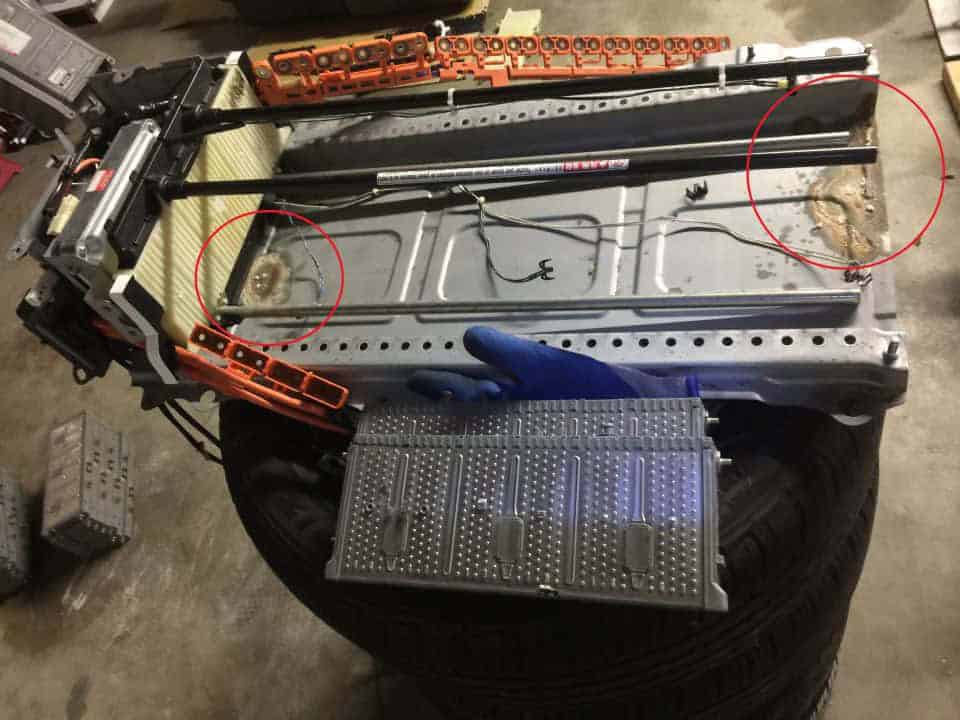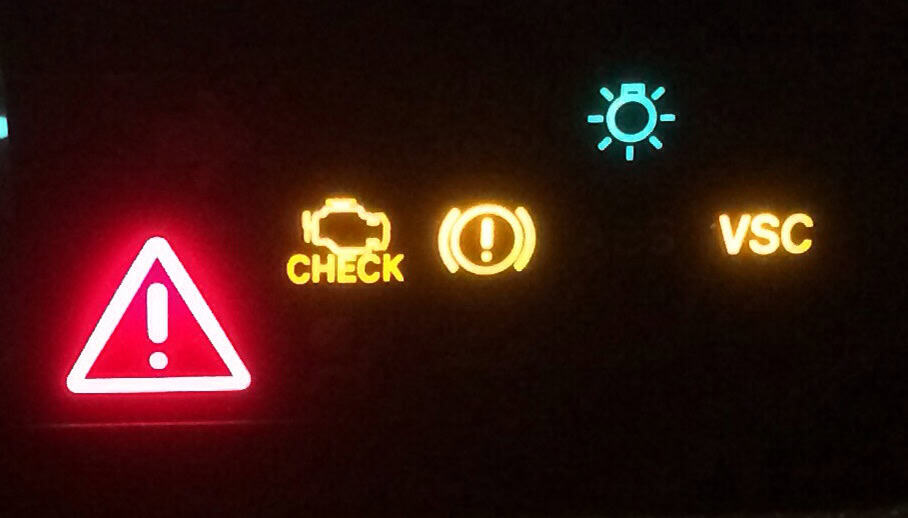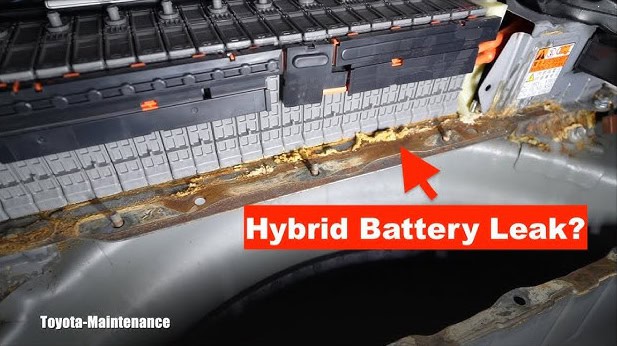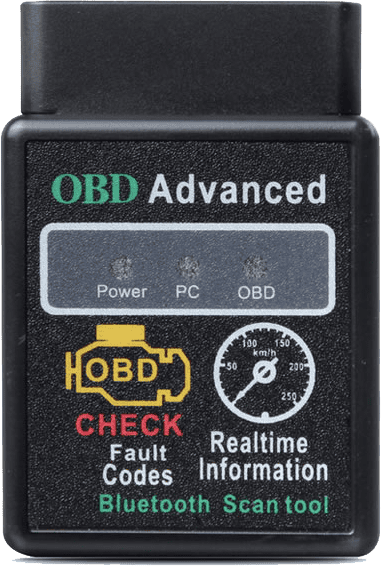Toyota Hybrid Prius Trouble Code: P0AA6

Alec Sharma
Founder of iHybrid Battery
Introduction
The P0AA6 trouble code is a diagnostic code specific to Toyota hybrids, particularly the Prius. It indicates a high-voltage ground fault, a critical issue in the hybrid battery system.
When this code appears, the vehicle tends to stall. Typically, the engine light will come on to indicate a problem, and the car will continue running until it’s turned off. However, once stopped, it won’t restart. If the engine light comes on, it’s advisable to park in a safe location before turning off the vehicle.
In this blog, we’ll explore what the P0AA6 code means, its symptoms, causes, and the steps to diagnose and resolve it effectively.
What Does the P0AA6 Trouble Code Mean?
The P0AA6 trouble code is triggered when the Prius’ onboard diagnostic system detects an electrical leak or short to ground within the high-voltage system. This fault can arise in components such as the hybrid battery pack, inverter, or high-voltage cables. Subcodes (or detail codes) like 526 and 612 provide further clues about the specific location of the fault:
- 526: General isolation fault.
- 612: Isolation fault within the battery pack.
Understanding these subcodes is essential for accurate diagnosis and repair.


Symptoms of the P0AA6 Trouble Code
Drivers experiencing a P0AA6 trouble code may notice one or more of the following symptoms:
- Warning Lights: The “Check Hybrid System” or “Check Engine” light illuminates on the dashboard.
- Startup Issues: Difficulty starting the car
These symptoms indicate that immediate attention is required to prevent further damage to the hybrid system.
Common Causes of the P0AA6 Trouble Code
Several issues can lead to the P0AA6 trouble code:
- Damaged Hybrid Battery: Corrosion or physical damage to the battery modules can lead to electrical leakage. This may be caused by a leaking battery or water entering the battery compartment.
- Faulty Inverter or Converter: Problems in the components that manage power distribution within the hybrid system.
- High-Voltage Cable Issues: Insulation wear or damage leading to ground faults.
- Water Intrusion: Moisture entering the battery pack or electrical components due to leaks.
- Malfunctioning Sensors: Faulty ground fault detection sensors providing inaccurate readings.


Diagnosing the P0AA6 Code
Accurate diagnosis is the key to resolving the P0AA6 trouble code. Here’s how to proceed:
- Use an OBD-II Scanner:
- Ensure the scanner is compatible with Toyota hybrids to retrieve both the main code and subcodes.
- Inspect the Hybrid Battery:
- Look for corrosion, discoloration, or physical damage in the battery modules.
- Check High-Voltage Cables:
- Examine the cables for wear, tears, or signs of electrical arcing.
- Test for Water Intrusion:
- Inspect the battery compartment for moisture or leaks.
- Verify Sensors:
- Confirm that the ground fault detection sensors are functioning correctly.
How to Fix the P0AA6 Trouble Code
Hybrid Battery Repairs
- Replace or repair damaged modules.
- Clean corrosion and ensure proper insulation.
High-Voltage Cable Replacement
- Replace cables with compromised insulation or visible damage.
Repair Water Intrusion
- Locate and fix leaks.
- Dry and clean the affected area thoroughly.
Sensor Replacement
- Replace malfunctioning ground fault sensors.
Inverter/Converter Repair
- Inspect and repair or replace faulty inverter components.
Cost of Repairs
The cost of addressing the P0AA6 trouble code varies depending on the underlying issue:
-
Diagnostic Testing
$100 – $150 -
Hybrid Battery Repairs
$500 – $1,000Depending on whether modules are refurbished or new
-
High-Voltage Cable Replacement
$200 – $500 -
Sensor Replacement
$150 – $300
Preventing the P0AA6 Trouble Code
Prevention is always better than repair. Follow these tips to reduce the risk of encountering the P0AA6 trouble code:

Regular Maintenance
Schedule periodic hybrid system inspections.

Protect Against Moisture
Ensure the battery compartment is sealed and dry.

Address Issues Promptly
Don’t ignore warning lights or unusual vehicle behavior.
How to fix it P0AA6 Code in Toyota Prius

First check 12Volt battery
Tools required: Fluke 15B+ Digital Multimeter
Loose connection at the 21volts battery or dying battery does crazy things. This is first to make sure voltage is 11volts or more when the car is OFF and would be about 14volts once running normally
You can use any multimeter that can measure DC volts to carry out this measurement.
Manually try moving the terminals to make sure it is tight.
Check Hybrid Battery Insulation
Look for corrosion spots; this will be very obvious if you don’t see the discoloration sports and water-like substance at the bottom of the modules.
Disconnect the battery high-voltage terminals
Disconnect the orange safety disconnect
Disconnect the battery voltage module or battery computer where there is an orange connector connected. This is very important to not cause any damage to the battery computer when doing the insultation test


Once the battery is isolated like this, check the battery insulation by connecting one lead to the ground and the other to one of the 2 terminals, and then do the same with the other terminals.
Check the AC Compressor
Disconnect the invertor
Connect one lead to the body and then the other one to the one terminal, and other to the other terminal
Check the high-voltage cable
Make sure battery and invertor are disconnected at both ends and then test the insulation of the cable.
The P0AA6 code is triggered when the system detects a current leak in the high-voltage system. However, for this code to appear due to a damaged battery, the battery module must be significantly deteriorated. In many cases, we’ve observed that battery modules with lower insulation, as identified by an insulation meter, are not flagged by the battery computer. These modules with reduced insulation can cause issues over time.
A module with lower insulation may gradually leak gas or electrolyte, leading to degraded capacity or a lower average voltage. Eventually, this can result in the P0A80 code, which indicates the need for “Replacement of Hybrid Battery.”
We have also observed instances where the module body has a burned spot and exhibits low insulation, while its capacity and internal resistance remain normal, similar to any other module. Visible inspection and insulation testing are the only reliable methods to identify such defective modules.
Always inspect the module for visible signs of discoloration. Due to electrolyte leakage, dust tends to stick to the affected area, making the damage more noticeable. Perform an insulation test by measuring from the terminals to the discolored or burned spot to confirm low insulation.

Hybrid batteries power a hybrid car using nickel metal hydride or lithium-ion (Li-ion) battery packs. Lasting years or 150,000 miles, they use regenerative braking to charge the battery and improve fuel economy. A warning light may signal a needed hybrid battery replacement in a plug-in hybrid or electric vehicle.
Conclusion
The P0AA6 trouble code in a Toyota Prius is a serious issue that demands immediate attention. By understanding its causes, symptoms, and repair options, you can ensure your hybrid vehicle remains reliable and efficient. If you’re experiencing this trouble code, consult a professional mechanic or hybrid specialist for a thorough diagnosis and repair.
If you need expert assistance with your Toyota Prius or hybrid vehicle, contact us today for reliable and affordable service!


 Customer Help
Customer Help